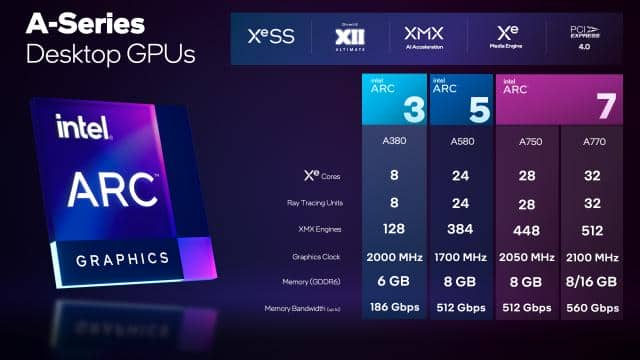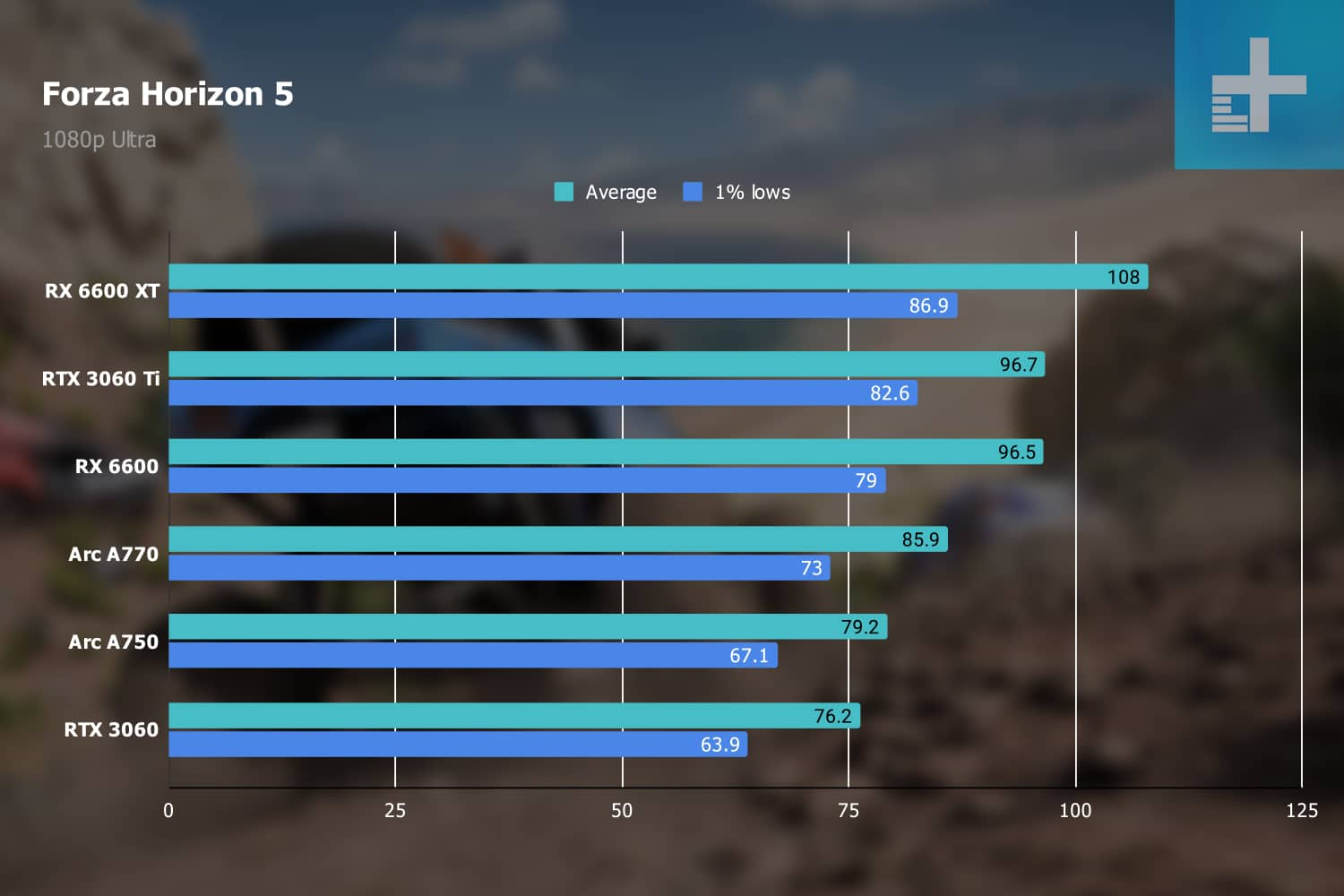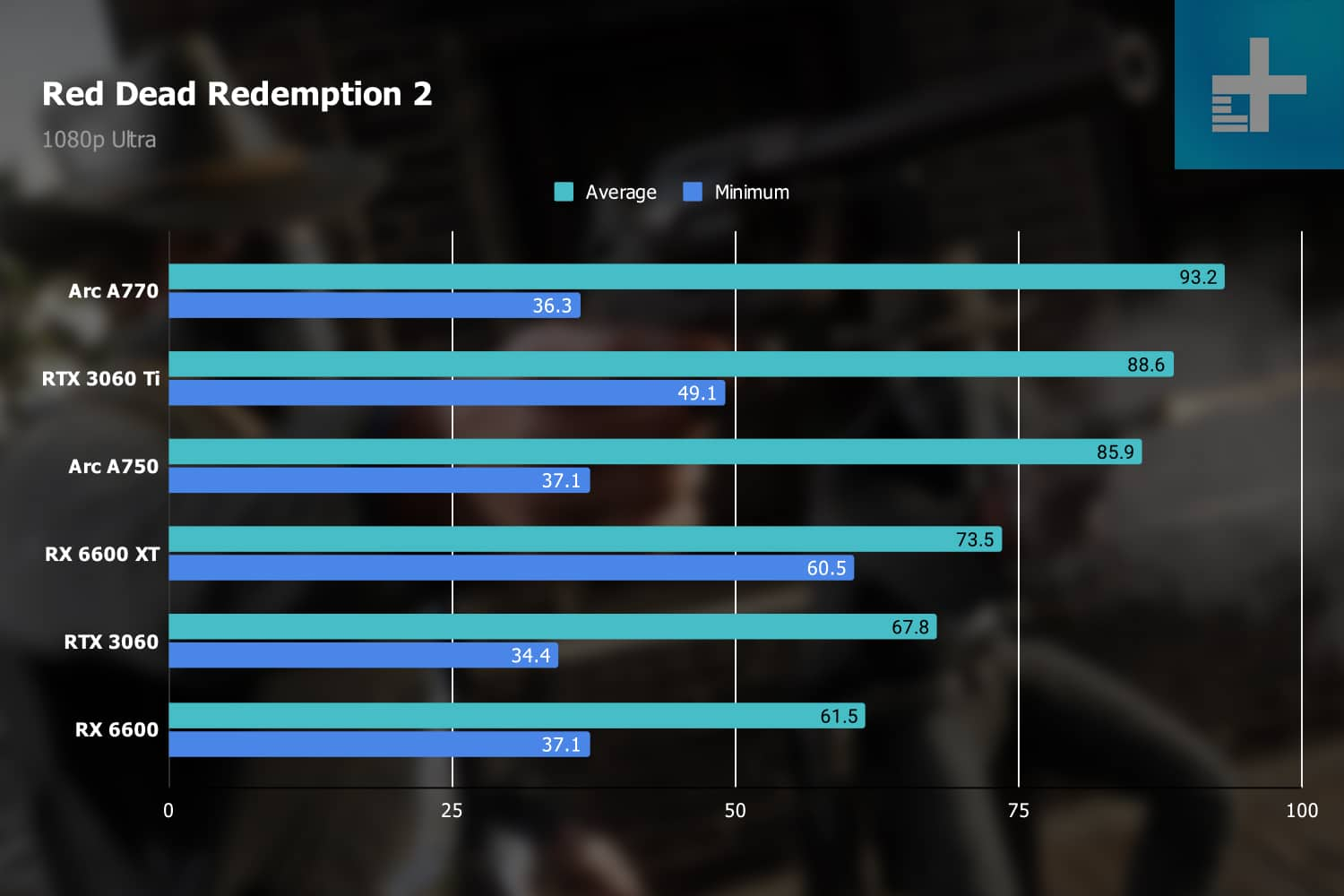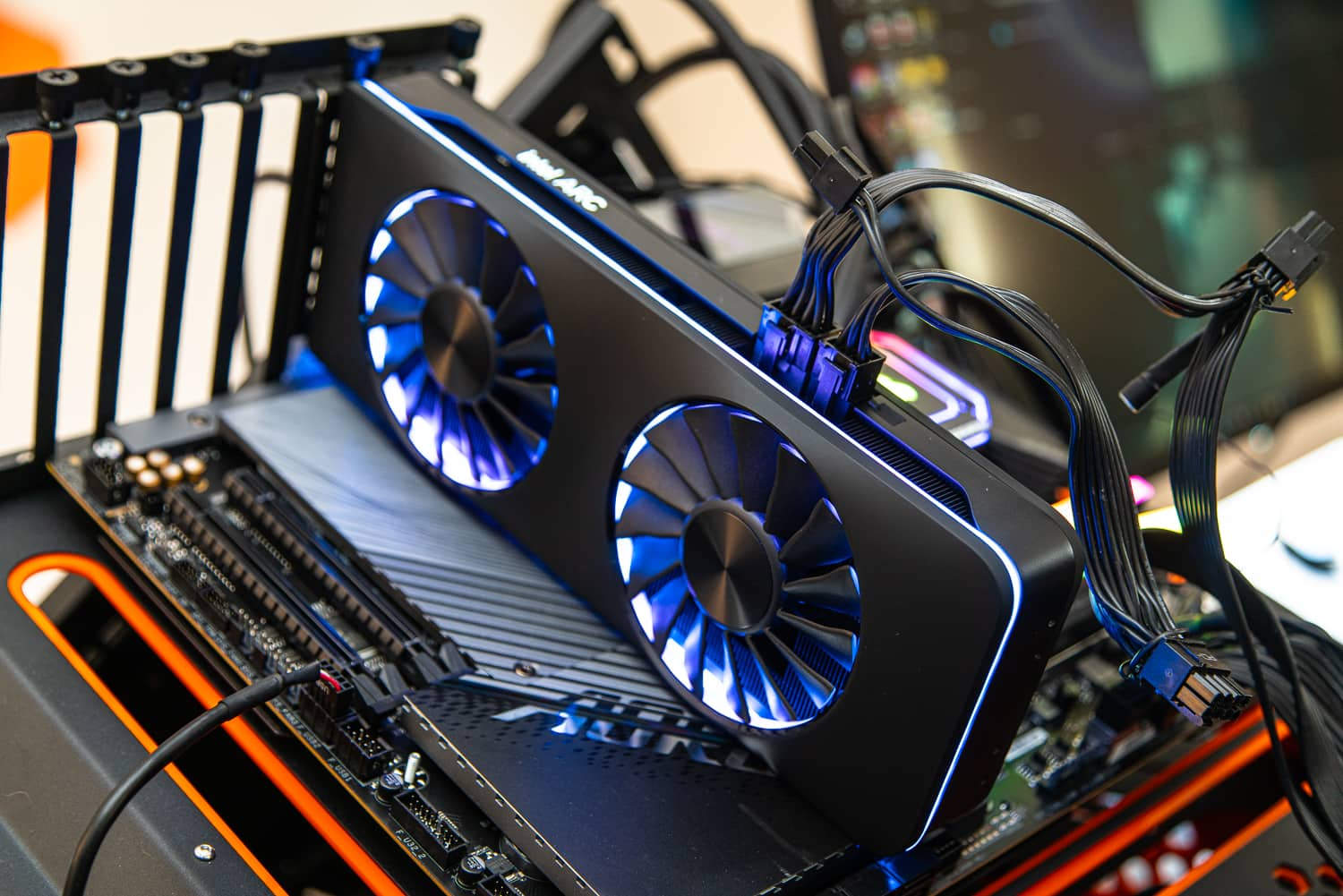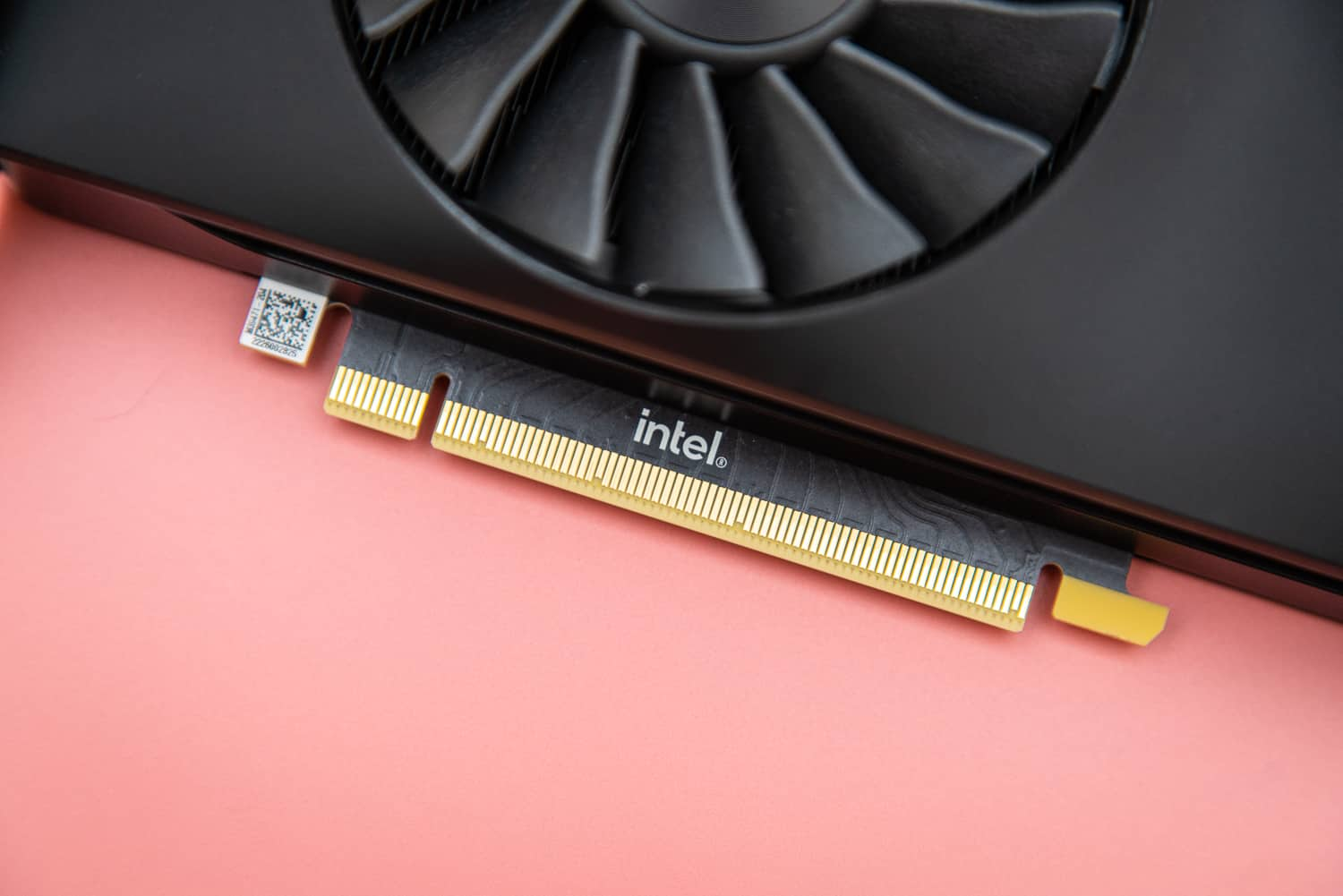With the arrival of Intel Arc Alchemist, the GPU market is getting a breath of fresh air. The two flagship models, Arc A770 16GB and Arc A770 8GB, are ready to challenge Nvidia’s GeForce RTX 3060 and RTX 3060 Ti. Let’s dive into the comparison and find out how these GPUs stack up.
Specs
Comparing Nvidia graphics cards to Intel’s Arc based solely on specs is no easy task. The architectural differences between these cards make it challenging to rely on typical indicators like core counts.
Adding to the complexity, Intel will release two versions of the Arc A770: one with 8GB of memory and the other with 16GB. However, Intel will not be directly releasing the 8GB version, leaving it to board partners to handle.
In terms of the main battle, the 16GB Arc A770 versus the RTX 3060, let’s take a closer look at their specs and compare them.
The two Arc A770 models are almost identical, except for the significant difference in memory size: 16GB and 8GB. The RTX 3060 sits in between with 12GB, which is more than the RTX 3070’s 8GB. The Arc A770 has more memory, faster bandwidth, and a higher boost clock. However, it comes at the cost of higher total board power (TBP) by an additional 55 watts.
Performance
We have thoroughly tested both the Arc A770 and the RTX 3060, comparing their performance in various scenarios. In this article, let’s focus on how the A770 fares against the RTX 3060. However, keep in mind that these numbers can also be used to compare the A770 with AMD’s RDNA 2 GPUs.
Intel’s Arc Alchemist excels in running DirectX 12 and Vulkan titles better than DX11 and older titles. This is evident in our tests. We evaluated the 16GB version of the Arc A770 at 1080p and 1440p in multiple games, comparing its pure gaming performance and ray tracing capabilities with the RTX 3060.
In Forza Horizon 5 at maximum settings, the Arc A770 achieved an average of 85.9 frames per second (fps), surpassing the RTX 3060’s 76 fps. However, the RTX 3060 Ti dominates with 96 fps.
In Red Dead Redemption 2, the Intel Arc A770 outperforms not only the RTX 3060 but also the RTX 3060 Ti by a small margin. The Arc A770 scored an average of 93 fps, followed by 88 fps for the 3060 Ti and a mere 67 fps for the RTX 3060. Nvidia takes the lead in Cyberpunk 2077, with the RTX 3060 reaching 60 fps compared to the A770’s 58 fps. This was the only game where Nvidia came out on top.
Testing at 1440p yielded similar results. The Arc A770 16GB performed between the RTX 3060 and the 3060 Ti on average. When it comes to ray tracing, the Arc A770 surpasses AMD options and even beats the RTX 3060 on average. While Nvidia remains the king of ray tracing, Intel has the potential to shake things up with its competitive performance.
Initially, the Arc A770 was expected to perform closer to the RTX 3070 or even the 3070 Ti. Although that turned out not to be the case, it’s evident that Intel is capable of holding its ground against Nvidia’s RTX 3060. It outperforms the RTX 3060 in most benchmarks. However, results may differ in DX11 or older titles, where Intel still has room for improvement. But, for future releases, Intel’s Arc GPUs are ready to compete.
Pricing and Availability
Prior to the release of the Intel Arc, the company made it clear that it aimed to stay competitive in terms of pricing. So far, it is living up to its promise. The difference in price between the three (or two, considering the 8GB version’s release is uncertain) cards won’t be significant.
- Intel Arc A770 16GB — $350
- Intel Arc A770 8GB — $330
- Nvidia GeForce RTX 3060 — $329
At first glance, Intel Arc appears to be more expensive. However, the actual price of the RTX 3060 often differs from its $329 MSRP. Currently, Nvidia’s board partners sell the card for prices ranging from $380 to $450. Some retailers also offer the Founders Edition on platforms like Amazon for up to $500.
While Intel Arc may seem more expensive on paper, in reality, its cost remains within the same price range as the RTX 3060. However, availability and demand will ultimately determine whether Intel’s graphics technology can truly provide a more affordable option. The Intel Arc A770 16GB Limited Edition GPU will be available starting from October 12, 2022. As for the 8GB version, it might be released by Intel’s board partners, but a specific date is yet to be announced. At just $20 more, the 16GB version offers significantly better value.
Intel Surprises with the Arc A770
Intel Arc has faced its fair share of challenges, from delays to driver issues and performance that falls short compared to Nvidia’s and AMD’s flagship GPUs. Breaking into a market historically dominated by two major players is no easy task. Nonetheless, our tests speak for themselves — the flagship Intel Arc A770 16GB GPU outperforms Nvidia’s RTX 3060 in most scenarios and comes close to the RTX 3060 Ti in some cases. Although slightly more expensive, the A770 remains in the same ballpark as the RTX 3060. It is worth noting that the A770 requires more power with its 55-watt higher TBP.
So, which one is better — the A770 16GB, the A770 8GB, or the RTX 3060? If you primarily play newer titles, the Intel Arc A770 is a reasonable choice, albeit a slightly risky one due to its newness. However, if you mainly play older games, deciding might be more challenging because Intel is still optimizing its performance in DX11 games.
If you don’t mind a bit of experimentation, the Intel Arc A770 proves to be a solid card within this price range.
Editors’ Recommendations:
- I tested AMD’s RX 7800 XT against Nvidia’s RTX 4070, and there’s a clear winner
- Nvidia’s RTX 4060 might arrive sooner than expected
- Nvidia’s RTX 4060 Ti may be more affordable, but will it be a good value?
- Nvidia GeForce RTX 4070 vs. AMD Radeon RX 6950 XT: a close call
- Nvidia RTX 4060 rumor claims even worse specs than the RTX 3060


